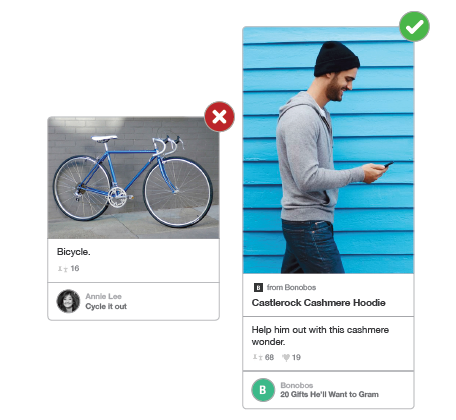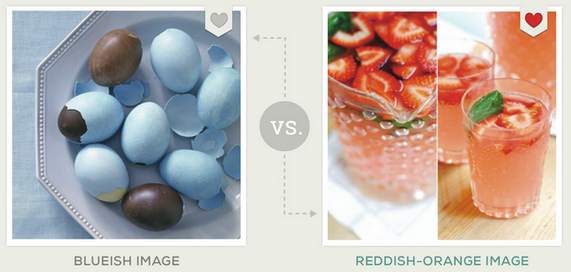Editor’s Note: This article was originally published by Web Marketing Today. Practical Ecommerce acquired Web Marketing Today in 2012. In 2016, we merged the two sites, leaving Practical Ecommerce as the successor.
Pinterest is a site that lets people pin their favorite images on virtual bulletin boards categorized by topic or interest. Many businesses use Pinterest to get their products in front of its growing user base.
Others can “repin” images for use on their boards, which is important because repinned images link back to their source. Each time an image gets repinned, the person who initially posted it earns referral traffic.
Images need to stand out in order to get repinned. Here are four ways to optimize product images, along with their associated descriptions, URLs, and boards, to make them more “pinnable.”
1. Format Images Properly
Shape and Size. On Pinterest, the shape and size of images matter a great deal. Properly formatted images have a better chance of being repinned.
Pinned images need to be more vertical than horizontal in orientation. According to Pinterest, the best size is an aspect ratio of 2:3 to 1:3.5 and a minimum width of 600 pixels. That means an image that is 600 pixels wide should be between 900 and 2100 pixels tall.

Properly format images for use on Pinterest.
Colors and Settings. According to a study by Curalate, a visual marketing platform, images that have more reds and oranges benefit from greater attention and repins than images that are blue in tone. Additionally, images that contain multiple dominant colors tend to receive a greater response than those with a single dominant color.

Red and orange images get more attention and repins.

Multiple dominant colors receive a greater response than single colors..
Pinterest says that the colors and settings you choose should reflect your brand. Images should also be clear, bright, and of high quality, such as in the examples below.

Colors and settings should reflect your brand.
Image Background. Images that have considerably less background get repinned more often than images with a higher degree of background.

Images with less background get repinned more often.
Faces in Images. Interestingly, images that do not contain faces in them receive more pins than those that do.

Images without faces get more repins.
2. Enhance Image Descriptions
Description Basics. Pins should have a description that not only describes the pin itself, but that encourages the user to take some form of action, such as visiting your website or purchasing a product. However, pins should not contain time-sensitive promotional information, hashtags, or suggestions for others to pin the image.
Description Keywords. Keywords are a vital component to use in the description. Not only do they help Pinterest understand what the image is about, but they also convey more information to your visitors. It’s best to incorporate keywords for which Pinterest users are already searching.
To discover what keywords people are using, go to Pinterest’s search function and type a few words associated with the image you want to add. Pinterest will display a set of words related to your query, which you can use in the description.
When composing the description, write as if you were speaking to a person, not a search engine. Also, include the primary keywords toward the beginning of the description as that will increase your chances of being found.
Description Length. While Pinterest gives you up to 500 characters to use in the description, only 75-100 of these initially appear on the desktop version. The number of characters displayed on the mobile version varies based upon the device. In either case, clicking on the image enables you to read the full version.
Put essential information — including relevant keywords — at the beginning of the description and then expand as you see fit.
3. Optimize Image URLS
The source of the image plays a significant role when pinning product photos. The URL associated with pinned images should contain the same or similar keyword that you used in the description. For example, if you pin a handmade scarf image from your website, it should originate from a page that contains the term “handmade scarf” in the URL.
4. Create Topically-relevant Boards
Naming the Board. When you create boards, include relevant keywords in the title. To cite the previous example, if you pin an image of a handmade scarf, place it on a board that uses the same or similar terms.
Board Description. Boards also have an area where you can add a brief description. Writing one that includes relevant keywords can work to your advantage when people search the site.
Board Cover. The first image you pin to a board becomes the cover image. However, you can select any pin within the board and make it the cover image. Choose one that’s compelling, and that provides a good overall sense of what the board contains.
You can rearrange boards on your Pinterest page, so list the most important boards first — the ones you would like people to interact with most — such as those that include product images.


